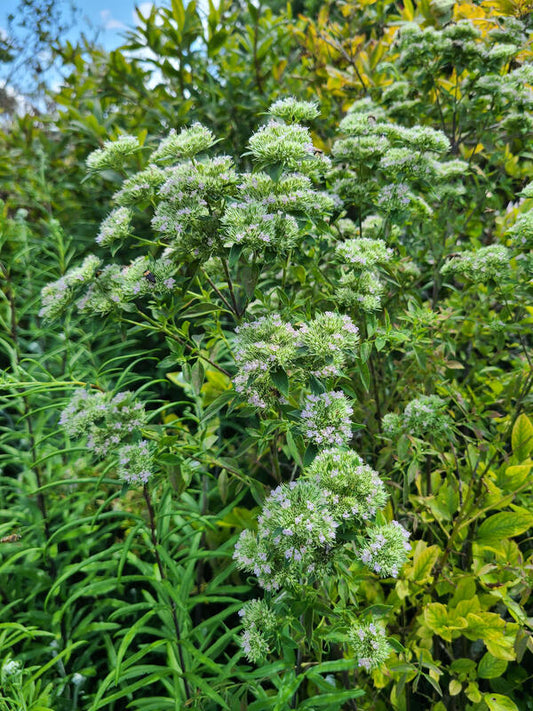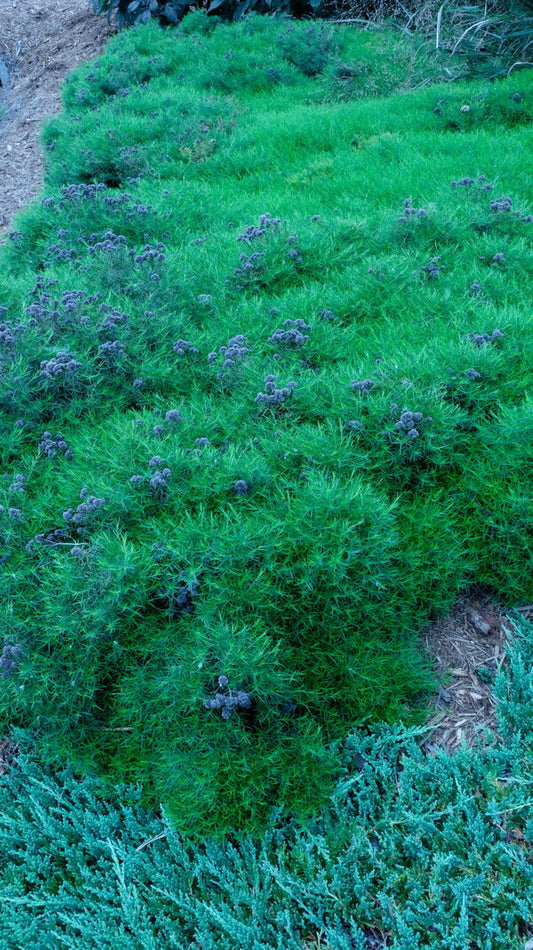Pycnanthemum thrives in woodlands with partial shade in a variety of soil types. It likes to have consistent water early on in the growing season but, as summer progresses, it will become more drought-tolerant.
-
Pycnanthemum albescens 'Malcolm Vidrine'
Item #: 17623
Zones: 5a to 9b, at least
Dormancy: Winter
Height: 36" tall
Culture: Sun
Origin: United States
Pot Size: 3.5" pot (24 fl. oz/0.7 L)
Regular price $22.00Regular priceUnit price per -
Pycnanthemum tenuifolium 'Campbell Carpet'
Item #: 12812
Zones: 6a to 8b, at least
Dormancy: Winter
Height: 18" tall
Culture: Sun
Origin: United States
Pot Size: 3.5" pot (24 fl. oz/0.7 L)
Regular price $22.00Regular priceUnit price per
More Information About Pycnanthemum
The mint family genus Pycnanthemum is fairly small, containing around 20 species, all of which are native to North America. All of the mountain mints have a strong mint scent and are commonly used to make tea (all except Pycnanthemum muticum, which although minty is also toxic).
Pycanthemum (Mountain Mint) Growing Conditions
In the wild, mountain mint thrives in woodlands with partial shade in a wide variety of soil types. It likes to have consistent water early on in the growing season but, as summer progresses, it will become more drought-tolerant. In the garden, pycnanthemum is much more attractive in part to full sun. While most species are quite stoloniferous, we have selected only those that play well with others by not spreading uncontrollably.
Pycnanthemum sap is a natural insect repellent (especially the aforementioned Pycnanthemum muticum) and can be rubbed on the skin or stuffed into a pocket. While butterflies ignore the repellent leaves, they love to visit the flowers as do an incredible array of amazing insects. Deer do not like to eat mountain mint. Apparently, mint is not their thing. Try planting near its cousins, monarda, clinopodium, and conradina to make your own herbal tea garden.




